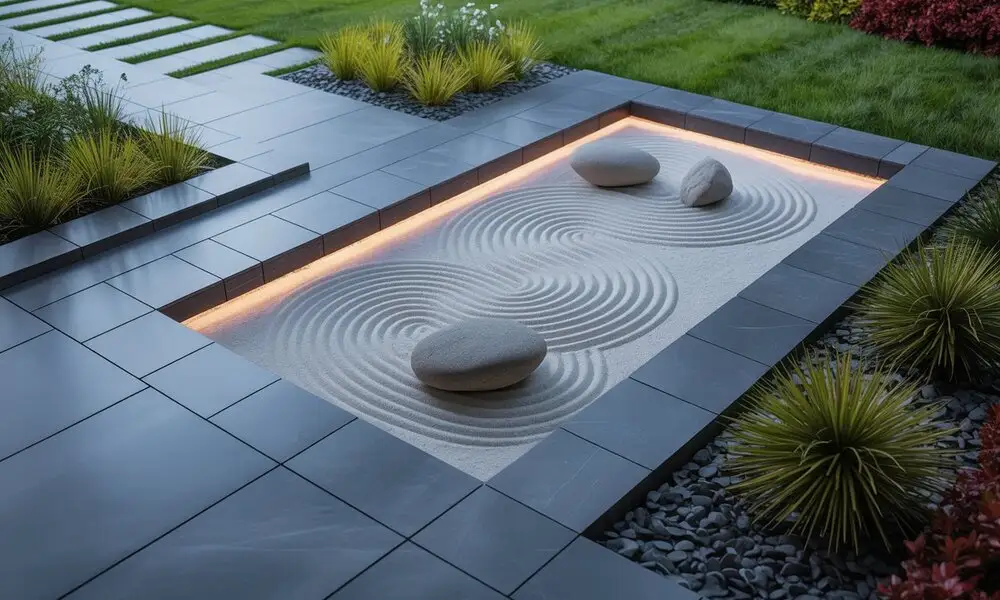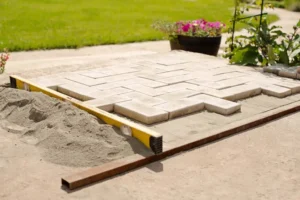How has computerized design improved landscaping? It has transformed the industry by addressing many of the challenges faced with traditional landscape planning such as inaccurate measurements, limited visualization, and time-consuming revisions. Before digital tools, landscape designs were sketched by hand, making it difficult for clients to visualize the final outcome and for designers to make fast, precise changes.
Today, with 3D landscape design and virtual landscape design tools, professionals can create highly detailed, realistic models that allow clients to “walk through” their future outdoor spaces before a single plant is placed. These technologies enable faster revisions, better collaboration, and more accurate project execution. This article explores how computerized design enhances landscaping, the practical benefits it offers, and where this digital transformation is headed.
How Has Computerized Design Improved Landscaping?

Computerized design has revolutionized the landscaping industry by blending technology with creativity. Tools like CAD (Computer-Aided Design), 3D rendering, and GIS (Geographic Information Systems) now streamline the entire design process from initial concept to final execution.
Faster planning & revisions
One of the biggest benefits is speed. Computerized tools allow for quick drafting, easy adjustments, and real-time updates. This efficiency means landscape designers can test multiple ideas rapidly and fine-tune plans without starting from scratch perfect for smart landscape planning.
Improved landscape visualization
Gone are the days of flat blueprints. With 3D landscape design and rendering tools, clients can experience realistic walk-throughs of their future outdoor spaces. These immersive previews make it easier to understand scale, layout, and aesthetics leading to more confident decisions.
Smarter, data-driven design
CAD and GIS integrate data like topography, drainage, and sun patterns into the design process. This means more accurate site planning and sustainable outcomes. Designers can model how rainwater will flow or where sunlight hits throughout the day critical for plant placement and irrigation.
Real-time collaboration
Computerized design improves communication across the board. Clients, landscape designers, and contractors can view and comment on plans simultaneously, even remotely. Revisions can be made on the spot, reducing miscommunication and project delays. If you want best 3D Rendering Landscape Design in San Jose choose only Lakota Design Group.
Advantages of Computerized Landscape Design
Computerized tools have transformed the landscaping industry by improving precision, saving time, and supporting sustainable outdoor solutions. Below are the key advantages of computerized landscape design and how they enhance both residential and commercial projects.
Precision in every detail
One of the biggest advantages of computerized landscape design is accuracy. CAD software allows designers to create precise layouts for plant placement, irrigation systems, and hardscape features like patios, retaining walls, and pathways. This level of precision ensures that every inch of the outdoor space is utilized efficiently, eliminating guesswork and costly mistakes.
Time-saving and streamlined workflow
Computerized design speeds up the entire project cycle from initial drafts to final approval. Changes can be made quickly without redrawing plans, which accelerates approvals and installation. This means faster project turnarounds and the ability to handle multiple projects simultaneously, making it ideal for both residential and commercial landscaping.
Cost efficiency through accurate planning
Accurate material takeoffs, labor estimates, and site analysis reduce the risk of overspending. With better visualization and clear documentation, there’s less room for error or rework during installation. These cost-saving benefits make computerized design a smart choice for budget-conscious clients and large-scale developments alike.
Customization for unique spaces
Whether it’s a small backyard or a sprawling commercial campus, computerized design tools allow for tailored landscape solutions. Designers can create multiple versions of a layout, adjust features in real time, and provide clients with interactive 3D walk-throughs. This ensures that the final design reflects the client’s vision and functional needs perfectly.
Sustainability and eco-smart planning
Modern landscape design software supports sustainable practices. Designers can analyze sun exposure, drainage, and soil conditions to choose native plants, reduce water usage, and create climate-resilient layouts. These sustainable elements not only benefit the environment but also lower maintenance costs over time.
You may read about How To Design A Landscape Plan?
Computerized Landscape Design’s Future

The future of landscaping is increasingly digital, intelligent, and immersive. As technology evolves, computerized landscape design is expanding beyond traditional CAD and 3D modeling, embracing innovations like AI, AR/VR, and automation to transform how outdoor spaces are planned, built, and maintained.
AI-powered predictive design
Artificial intelligence and machine learning are set to revolutionize smart landscape planning. These technologies can analyze past design data, site conditions, and environmental factors to suggest optimal layouts, plant selections, and material use. Predictive models can also forecast future growth patterns, ensuring long-term success and sustainability in every design.
AR/VR for immersive experiences
Virtual landscape design is becoming more interactive through augmented reality (AR) and virtual reality (VR). Clients can walk through a digital version of their future landscape, exploring details like textures, lighting, and plant movement in real time. This next-level landscape visualization creates deeper engagement and faster design approvals.
Smart landscape systems integration
The future of computerized design includes fully integrated systems automated irrigation, outdoor lighting, and maintenance sensors all controlled via smart devices. Designers can plan these features directly into digital layouts, helping clients monitor water usage, lighting schedules, and plant health with ease. This is the core of future-ready smart landscape planning.
Eco-conscious and data-driven planning
Advanced simulation models will enhance eco-conscious designs by modeling stormwater runoff, solar exposure, and soil health. These insights allow designers to create virtual landscape designs that are not only beautiful but also climate-resilient and sustainable, using native plants and low-impact materials intelligently.
Automation in design and project management
Automation tools will streamline project timelines by managing everything from material sourcing to crew scheduling. This reduces delays, lowers costs, and ensures quality control across the board. Designers can focus more on creativity while automated systems handle the technical and logistical tasks.
Final Thoughts
How has computerized design improved landscaping? It’s made the process faster, more accurate, and highly visual. With tools like CAD, 3D rendering, and GIS, designers can create smarter, more efficient plans enhancing everything from landscape visualization to smart landscape planning and virtual landscape design.
At Lakota Design Group, we combine decades of experience with modern design technology to create custom, sustainable landscapes for homes and businesses alike.
Let’s turn your vision into reality.
Visit lakotadesigngroup.com or contact us today to get started!
FAQs
Can Clients See Their Landscape Before It’s Built?
Yes, one of the biggest advantages is landscape visualization. Using 3D rendering and virtual landscape design, clients can walk through a realistic model of their future space, explore materials, and request changes before any work begins.
How Does Computerized Design Support Smart Landscape Planning?
Smart landscape planning involves integrating data like sun exposure, slope, and drainage to make informed design choices. With computerized tools, designers can simulate these factors to ensure efficient irrigation, proper plant placement, and long-term sustainability.
Does Computerized Design Help Reduce Landscaping Costs?
Absolutely. By improving accuracy, reducing rework, and helping generate precise material estimates, computerized design helps avoid costly mistakes and shortens the project timeline resulting in significant savings.
Is Computerized Landscape Design Eco-Friendly?
Yes, it supports eco-conscious planning. Designers can simulate water flow, soil health, and sun patterns to choose native plants, minimize water use, and build climate-resilient landscapes that are both functional and sustainable.





